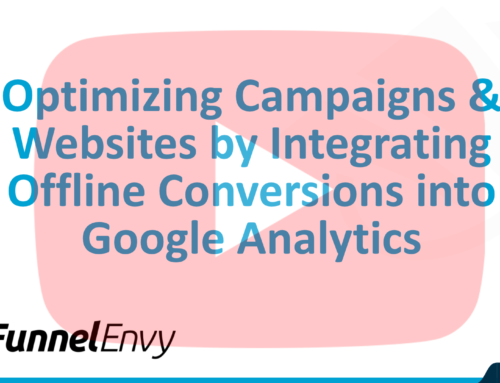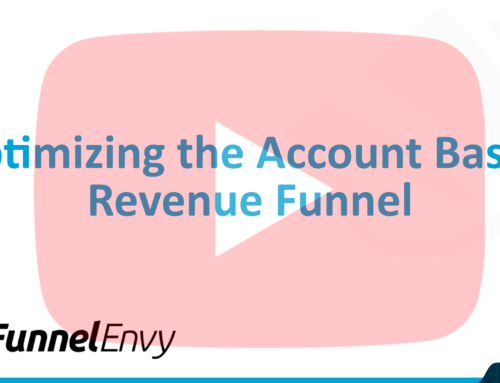Lead generation is the heart and soul of many business models, especially services firms and SaaS providers that rely on a steady flow of new customers for cash flow and growth. The tactics available for lead generation range from using appointment setting firms to hiring outside sales teams to improving your SEO and inbound marketing tactics. But a number of anecdotal experiences suggest that strategic outbound email marketing (and applying similar techniques to networking through platforms like LinkedIn) can help get you in front of the CEO (or your target prospect) quickly and effectively. The advantage of targeted emailing campaigns is that they let you control which companies and contacts you make and attract to your company. Here’s a closer look at one technique I’ve seen in play very successfully, specifically in B2B markets.

Source: Flickr
Step 1: Define your specific business goal
For companies that are hungry for leads, launching a lead generation campaign is a double edged sword. It’s easy to get excited about the potential of new leads, but suddenly everyone is trying to join in the action. “While you’re out trying to attract new leads for X product, could we try to generate interest in Y division?” However, it’s absolutely critical that the foundation of your campaign be built upon one very specific goal or agenda. The more narrow and specific your focus, the more success you will be. If you dilute your goals, there is a better than average chance that your program will fail to achieve any of the objectives you set out to accomplish.
So what makes an appropriate lead generation goal? Here are a few specific examples:
- An SaaS company with a portfolio of products focuses on developing leads for one specific software program.
- A services company launches a campaign to offer its services to a new vertical, such as SEO for accounting firms.
- A company developing content campaigns sets a target to connect with the Chief Marketing Officer of companies larger than $2 million per year in eight possible industries.
Don’t move forward until you’re able to articulate your goal in one sentence or less. Remember, as you get the hang of this, it’s possible to use the same process to push growth in other areas of your business.
Step 2: Develop a quality list
Lead gen professionals will often tell you that your best efforts will only yield results on par with the quality of your list. If your list contains any of the following, you’re likely to come up short:
- Out of date contact information
- Out of date names or titles
- Companies that are out of business
- Companies that are inactive in the space that you’re targeting
- Companies with a focus that’s shifted
- Bad geographic data
- Companies that don’t fit your target profile
There’s a range of ways you can get your lists, from creating your own to industry groups to list retailers. If you’re buying a list, it’s important to understand how active a list is, how frequently it’s updated, and what quality assurance techniques they use to vet their information. Where possible, I’d advocate targeting a smaller sample of dream companies that you’re interested in doing business with. Leverage the advantage of being in control of what companies you’re putting your message in front of. But for some verticals, lead gen is a numbers game. As long as you’re working off quality information, both in terms of recency and accuracy, that’s the most important aspect of a list.
Finally, consider the make-up of your companies and come up with four or five titles that you could target. For example, if you’re in the IT space, you might be writing to the Chief Technology Officer, the Director of IT, an IT consultant, or even the office manager. This varies widely depending on the size and type of company that you’re targeting, but create a cluster of job titles with this position in mind.
Step 3: Draft a short, tight sales pitch
I’ll caveat this by saying that there isn’t a single right approach here. For some people, long sales letters work well. For others, highly personalized prospecting messages that show a deep understanding of the company are what’s required. For purposes of this experience, however, I’m going to advocate that you write a very specific message.
Here are the basic guidelines to keep in mind when crafting your pitch:
- No more than 300 words; ideally, 250 words or less.
- Features a tightly crafted value proposition that’s written with your specific target in mind. The piece should be drafted to a company’s CMO or sourcing manager, for example. The more specific to the problems and challenges that person faces, the better.
- Spend significant time on your headlines and your opening. It’s critical that you capture the reader’s attention and keep them moving along.
- Take a copywriting approach that’s as benefits driven as possible.
- Leverage real customer data and examples, including client names, statistics and pull quotes.
- Avoid clichés.
- Write in a natural, friendly, conversational tone. Avoid jargon and formal business language.
- End on a strong call to action.
In a sense, this is copywriting 101. At the same time, delivering this in less than 300 words is a writing challenge of the highest order. If you achieve it, you’ll have a piece of copy that not only helps generates leads but can be used in multiple places.
Step 4: Choose entry points other than your target recipient
It’s possible, during the list building process, to identify a number of individuals that you could send your email to – other than the person you really want to target at the company you’re reaching out to. If you’re hoping to talk to IT, start with admin or sales. It’s counterintuitive, but what you’re asking for here is a referral. You’re going to take advantage of the power of great writing, professional presentation, and our overwhelming desire to get something off our plates to ask your ideal prospect’s colleague to make a simple email introduction.
Consider, for a moment, if you receive an email that begins with something like:
Hi Kate, Could you refer me to the person that’s responsible for your hiring process?
If I am Kate and I’m not the Hiring Director, I may ignore your email. But more often, I’ll respond to your message with a cc to the appropriate person or giving you their email address. You want to strategically try, over the course of a few weeks if needed, to follow up with a range of individuals at a company. You should also not be afraid to send a follow up message after a week or so, reiterating your request. One point that I’ve noticed is that this works particularly well with medium and larger companies.
Step 5: How to close
Where the process can fall apart is how you respond to the message with a cc to the appropriate person. When you have a window of opportunity, resist the urge to send a presentation or brochure, or a long email explaining why you’re getting in touch. Instead, you want to use this opening to make a personal contact with your ideal prospect. Ask to get them on the phone, even if it’s for 15 or 20 minutes. You’ve then moved them along in the funnel from cold contact to lukewarm lead, and can use your sales process to close the deal.
It’s not a fool-proof process. It doesn’t work all the time, and it depends on how effective your copy is, how targeted your message is to your prospect, and whether you’ve been persistent and focused in your outreach. But especially in the B2B markets, this email marketing approach can help you make new contacts and launch the conversation with potential clients.
What approaches are you using today in prospecting emails or lead generation outreach that are effective? Let me know in the comments below.





